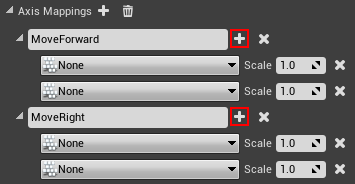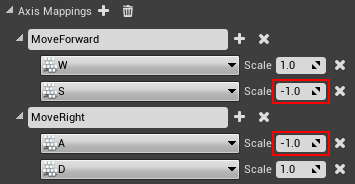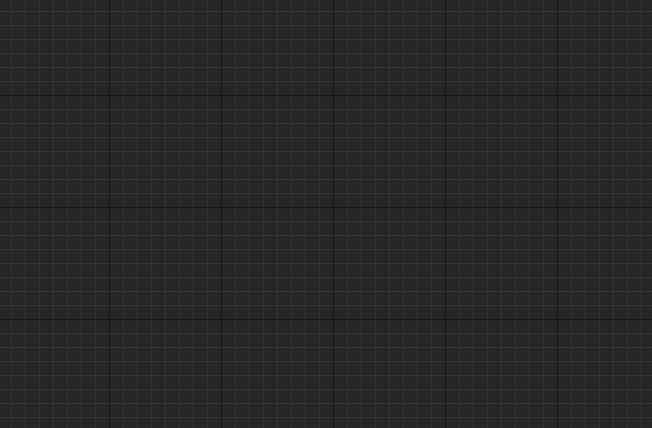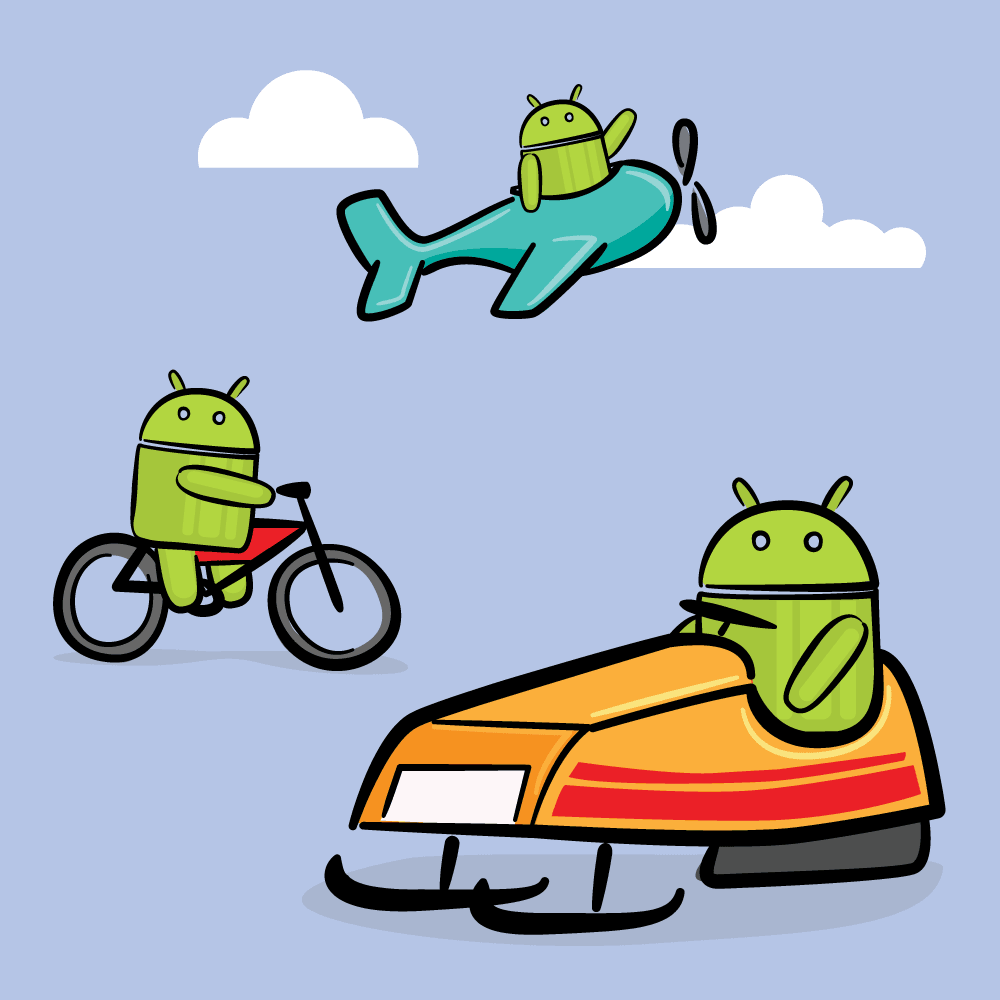Unreal Engine 4 Blueprints Tutorial
In this Unreal Engine 4 blueprints tutorial, you will learn how to use blueprints to create a player character, set up inputs and make an item disappear when the player touches it.

Blueprints is the visual scripting system inside Unreal Engine 4 and is a fast way to start prototyping your game. Instead of having to write code line by line, you do everything visually: drag and drop nodes, set their properties in a UI, and drag wires to connect.
In addition to being a fast prototyping tool, Blueprints also makes it very easy for non-programmers to dive in and start scripting.
In this tutorial, you will use Blueprints to:
- Set up a top-down camera
- Create a player-controlled actor with basic movement
- Set up player inputs
- Create an item that disappears when the player touches it
This tutorial also makes basic use of vectors. If you are not familiar with vectors, I recommend this article on vectors at gamedev.net
Getting Started
Download the starter project and unzip it. To open the project, go to the project folder and open BananaCollector.uproject.
You will see the scene below. This is where the player will move around and collect the items.

I have categorized the project files into folders for easier navigation, like you see here:

You can use the button highlighted in red above to show or hide the sources panel if you’d like.
Creating the Player
In the Content Browser, navigate to the Blueprints folder. Click the Add New button and select Blueprint Class.
Since you want the actor to be able to receive inputs from the player, the Pawn class is fitting. Select Pawn from the pop-up window and name it BP_Player.

Attaching a Camera
A camera is the player’s method of looking into the world. You will create a camera that looks down towards the player.
In the Content Browser, double-click on BP_Player to open it in the Blueprint editor.
To create a camera, go to the Components panel. Click Add Component and select Camera.

For the camera to be in a top-down view, you need to place it above the player. With the camera component selected, go to the Viewport tab.
Activate the move manipulator by pressing the W key and then move it to (-1100, 0, 2000). Alternatively, you can type the coordinates into the Location fields. It is located under the Transform section in the Details panel.

If you have lost sight of the camera, press the F key to focus on it.
Next, activate the rotation manipulator by pressing the E key. Rotate the camera down to -60 degrees on the Y-axis.

Representing the Player
A red cube will represent the player so you will need to use a Static Mesh component to display it.
First, deselect the Camera component by left-clicking an empty space in the Components panel. If you don’t do this, the next added component will be a child of Camera.
Click Add Component and select Static Mesh.

To display the red cube, select the Static Mesh component and then go to the Details tab. Click on the drop-down located to the right of Static Mesh and select SM_Cube.

This is what you should see (you can hit F inside the Viewport to focus on this if you don’t see it):

Now, it’s time to spawn the player Pawn. Click Compile and go back to the main editor.
Spawning the Player
Before the player can control the Pawn, you need to specify two things:
- The Pawn class the player will control
- Where the Pawn will spawn
You accomplish the first by creating a new Game Mode class.
Creating a Game Mode
A Game Mode is a class that controls how a player enters the game. For example, in a multiplayer game, you would use Game Mode to determine where each player spawns. More importantly, the Game Mode determines which Pawn the player will use.
Go to the Content Browser and make sure you are in the Blueprints folder. Click the Add New button and select Blueprint Class.
From the pop-up window, select Game Mode Base and name it GM_Tutorial.

Now, you need to specify which Pawn class will be the default. Double-click on GM_Tutorial to open it.
Go to the Details panel and look under the Classes section. Click the drop-down for Default Pawn Class and select BP_Player.

Before you can use your new Game Mode, the level needs to know which Game Mode to use. You can specify this in World Settings. Click Compile and close the Blueprint editor.
Each level has their own settings. You can access the settings by selecting Window\World Settings. Alternatively, you can go to the Toolbar and select Settings\World Settings.

A new World Settings tab will open next to the Details tab. From here, click the drop-down for GameMode Override and select GM_Tutorial.

You will now see that the classes have changed to the ones selected in GM_Tutorial.

Finally, you need to specify where the player will spawn. You do this by placing a Player Start actor into the level.
Placing the Player Start
During the process of spawning a player, the Game Mode looks for a Player Start actor. If the Game Mode finds one, it will attempt to spawn the player there.
To place a Player Start, go to the Modes panel and search for Player Start. Left-click and drag Player Start from the Modes panel into the Viewport. Releasing left-click will place it.

You can place this wherever you like. When you’re done, go to the Toolbar and click Play. You will spawn where you placed the Player Start.

To exit the game, click the Stop button in the Toolbar or press the Esc key. If you can’t see your cursor, press Shift+F1.
It’s not much of a game if you can’t move around, right? Your next task is to set up the input settings.
Setting Up Inputs
Assigning a key to an action is called key binding.
In Unreal, you can set up key bindings that will trigger an event when you press them. Events are nodes that execute when certain actions happen (in this case, when you press the bound key). When the event is triggered, any nodes hooked up to the event will execute.

This method of binding keys is useful because it means you do not have to hard code keys.
For example, you bind left-click and name it Shoot. Any actor that can shoot can use the Shoot event to know when the player has pressed left-click. If you want to change the key, you change it in the input settings.

If you had hard coded it, you would have to go through each actor and change the keys individually.
Axis and Action Mappings
To view the input settings, go to Edit\Project Settings. On the left, select Input under the Engine section.

The Bindings section is where you will set up your inputs.

Unreal provides two methods to create key bindings:
- Action Mapping: These can only be in two states: pressed or not pressed. Action events will only trigger once you press or release the key. Used for actions that don’t have an in-between state, such as firing a gun.
- Axis Mapping: These output a numerical value called an axis value (more on that later). Axis events will fire every frame. Generally used for actions that require a thumbstick or mouse.
For this tutorial, you will use axis mappings.
Creating Movement Mappings
First, you will create two axis mapping groups. Groups allow you to bind multiple keys to one event.
To create a new axis mapping group, click the + sign to the right of Axis Mappings. Create two groups and name them MoveForward and MoveRight.

MoveForward will handle moving forward and backwards. MoveRight will handle moving left and right.
You will map movement to four keys: W, A, S and D. Currently, there are only two slots to map keys. Add another axis mapping to each group by clicking the + sign next to the group name field.

To map a key, click the drop-down to bring up a list of keys. Map the W and S keys to MoveForward. Map the A and D keys to MoveRight.

Next, you will set the Scale fields.
Axis Value and Input Scale
Before you set the Scale fields, you need to learn about how they work with axis values.
An axis value is a numerical value that is determined by the type of input and how you use it. Buttons and keys output 1 when pressed. Thumbsticks output a value between -1 and 1 depending on the direction and how far you push it.

You can use the axis value to control a Pawn’s speed. For example, if you push the thumbstick to the edge, the axis value will be 1. If you push it halfway, it will be 0.5.
By multiplying the axis value with a speed variable, you can adjust the speed with the thumbstick.

You can also use the axis value to specify a direction along an axis. If you multiply a Pawn’s speed by a positive axis value, you will get a positive offset. Using a negative axis value will result in a negative offset. Adding this offset to the Pawn’s location will determine which direction it moves in.

Since keyboard keys can only output an axis value of 1 or 0, you can use scale to convert it to a negative. It works by taking the axis value and multiplying it by the scale.
If you multiply a positive (the axis value) with a negative (the scale), you will get a negative.
Set the scale of the S and A keys by clicking on the Scale field and entering -1.

Next, comes the fun part: making the Pawn move! Close the Project Settings and then open up BP_Player in the Blueprints editor by double clicking on it.
Moving the Player
First, you need to get the events for your movement mappings. Right-click an empty space in the Event Graph to get a list of nodes. From the menu, search for MoveForward. Add the MoveForward node listed under Axis Events. Note you’re looking for the red node under Axis Events, not the green node under Axis Values.
Repeat the process for MoveRight.

Now, you will set up the nodes for MoveForward.
Using Variables
To move, you need to specify how fast the Pawn is moving. An easy way to specify the speed is by storing it in a variable.
To create one, go to the My Blueprint tab and click the + sign to the right of the Variables section.

With your new variable selected, head over to the Details tab. Rename the variable to MaxSpeed. Afterwards, change the variable type to Float. Do this by clicking the drop-down next to Variable Type and selecting Float.

Next, you need to set the default value. Before you can set it though, you need to click Compile in the Toolbar.
With your variable still selected, go back to the Details tab. Go to the Default Value section and change the default value of MaxSpeed to 10.
![]()
Next, drag-click the MaxSpeed variable from the My Blueprint tab into the Event Graph. Select Get from the menu.

You will now multiply MaxSpeed and the axis value to determine the final speed and direction. Add a float * float node and connect Axis Value and MaxSpeed to it.

Getting the Player Direction
To move forward, you need to know where the Pawn is facing. Luckily, Unreal has a node for that purpose. Add a Get Actor Forward Vector node.

Next, add a Add Movement Input node. This node will take in a direction and value and convert it to a stored offset. Connect the nodes like so:

The white line represents a chain of execution. In other words, when the player moves the input axis, an event will generate that will execute the InputAxis MoveForward node. The white line represents that once this happens, you will then execute the Add Movement Input node.
The Add Movement Input node takes the following inputs:
- Target: set to self, which in this case is the player (the red box).
- World Direction: The direction to move the target, which in this case is the direction the player is facing.
- Scale Value: How much to move the player, which in this case is the max speed * the axis value (which remember is a value in the range of -1 to 1).
Repeat the process for MoveRight but replace Get Actor Forward Vector with Get Actor Right Vector. See how much you can do yourself without reviewing the instructions above!

Adding the Offset
To actually move the Pawn, you need to get the offset calculated by Add Movement Input and add it to the Pawn’s location.
Basically your strategy will be to move the player a small amount each frame of your game, so you’ll need to add the movement to an Event Tick event, which is generated every frame.
Navigate to the Event Tick node in your Event Graph. It should be grayed out to the left, but create one if you don’t have it.

To get the offset, create a Consume Movement Input Vector node. To add the offset, create an AddActorLocalOffset node. Afterwards, link them like so:

Basically, this means that each frame of the game, you’ll get any stored movement input, and add it to the actor’s current location.
Click Compile, and go back to the main editor and click Play. You will now be able to move around!

There is one small problem though. Higher end machines are be able to render frames at a quicker rate. Since Event Tick is called every frame, the movement nodes will execute more often. This results in the Pawn moving at a faster rate on high end machines and vice versa.
To fix this, your movement needs to be frame rate independent.
Frame Rate Independence
Frame rate independence means everything will have the same result, regardless of frame rate. Thankfully, achieving frame rate independence in Unreal is easy.
Exit the game and then open up BP_Player. Next, navigate to your Event Tick node and take a look at Delta Seconds.

Delta Seconds is the amount of time elapsed since the last Event Tick. By multiplying your offset with Delta Seconds, your movement will be frame rate independent.
For example, your Pawn has a maximum speed of 100. If one second had passed since the last Event Tick, your Pawn would move the full 100 units. If half a second had passed, it would move 50 units.

If the movement is frame rate dependent, the Pawn will move 100 units every frame, regardless of the time between frames.
To multiply your offset with Delta Seconds, add a vector * float node. Afterwards, connect your nodes like so:

Because the time between frames (Delta Seconds) is very small, your Pawn will move a lot slower. Fix this by changing the default value of MaxSpeed to 600.
![]()
Congratulations, you have successfully achieved frame rate independence!

You might have noticed that the cube passes right through everything. To fix that, you need to learn about collisions.
Strap on your safety helmet because you’re about to have a head-on collision with some theory!
Actor Collisions
When you think of a collision, you probably think of cars crashing into each other. Luckily, collisions in Unreal are much safer.
To be able to collide, an actor needs a representation of its collidable space (usually called collision). You can use one of the following:
- Collision mesh: These are auto generated (if you enable it) when a mesh gets imported. The user can also create a custom collision mesh using 3D software. The red box already has an auto generated collision mesh.
- Collision component: These come in three shapes: box, capsule and sphere. You can add them through the Components panel. Generally used for simple collision.
Below is an example of a character and its collision.

A collision occurs when an actor’s collision touches another actor’s collision.

Now, it’s time to enable collision.
Enabling Collision
You’re probably wondering why the box didn’t collide, even though it has a collision mesh. When you move an actor, Unreal only considers the root component for collisions. Since your Pawn’s root component doesn’t have any collision, it passes through everything.
So, to use the collision mesh, StaticMesh needs to be the root. To do this, go to the Components panel. Next, left-click and drag StaticMesh to DefaultSceneRoot. Release left-click to make StaticMesh the new root.

There is one more thing to do before collisions will work. Switch to the Event Graph and go to the AddActorLocalOffset node. Locate the Sweep input and set it to true by left-clicking the checkbox.

Basically, AddActorLocalOffset teleports the actor to a new location. Sweep makes sure the actor collides with anything that is between the old and new locations.
Go back to the main editor and click Play. The cube will now collide with the level!

The last thing you will do is create an item that disappears when the player touches it.
Creating an Item
Generally, an item is anything that the player can collect. You will use BP_Banana as the item.
To detect when the cube touches the item, you need an event node that triggers when there is a collision. You can use collision responses to generate such events.
A collision response also determines how an actor reacts when colliding with another actor. There are three types of collision responses: Ignore, Overlap and Block. Here is how they interact with each other:

Although you can use either Overlap or Block, this tutorial will only show you how to use Overlap.
Setting the Collision Response
Exit the game and then open BP_Banana. Select the StaticMesh component and then go to the Details panel. The Collision section is where you’ll set the collision response.

As you can see, most of the settings are greyed out. To make them editable, left-click the drop-down next to Collision Presets. Select Custom from the list.

Now, you need to specify the collision response between the item and the cube.
Components have an attribute called object type. The object type is just a convenient way to group together similar actors. You can read more about object types here.
Since the cube’s type is WorldDynamic, you want to change the collision response to that type. Under the Collision Responses section, change the collision response of WorldDynamic to Overlap. Do this by left-clicking the middle checkbox to the right of WorldDynamic.

Handling Collision
To handle collision, you need to use an overlap event. Go to the Components panel and right-click on StaticMesh. From the context menu, select Add Event\Add OnComponentBeginOverlap.

This will add the OnComponentBeginOverlap (StaticMesh) node to your Event Graph.

Finally, create a DestroyActor node and link it to the OnComponentBeginOverlap (StaticMesh) node. As its name suggests, it will remove the targeted actor from the game. However, since there is no target, it will destroy the actor that called it.

Placing the Item
Close the Blueprint editor and then make sure you are in the Blueprints folder.
Start placing bananas into the level by left-clicking and dragging BP_Banana into the Viewport.

Click Play and start collecting the bananas!

Where to Go From Here?
You can download the completed project here.
You are now one step closer to becoming an Unreal Engine expert. I hope this tutorial didn’t drive you bananas.
If you want to keep learning, check out the next post in the series, where I cover more about materials in Unreal Engine.






Comments